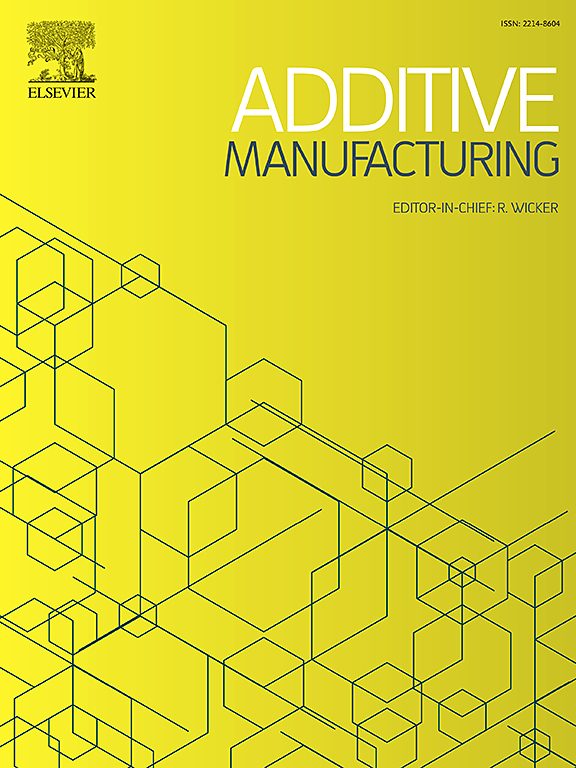Process optimization for coaxial extrusion-based bioprinting: A comprehensive analysis of material behavior, structural precision, and cell viability
IF 10.3
1区 工程技术
Q1 ENGINEERING, MANUFACTURING
引用次数: 0
Abstract
Coaxial extrusion-based bioprinting (CEBB), as a widely applied multimaterial bioprinting technology, demonstrates significant potential in the field of biomanufacturing. However, the fabrication of high-precision hierarchically structured concentric core-shell fibers, while ensuring high cell viability, poses a challenge. Herefore, systematic analysis of the CEBB is mandatory for process optimization concerning production efficiency and printing quality. This paper systematically describes the entire process of CEBB through analytical method, computational fluid dynamics (CFD) and experimental evaluation. Taking pre-crosslinked alginate-collagen bioink as an example, we used gelatin as a sacrificial material to fabricate a double-layered hollow structural scaffold encapsulating human dermal fibroblasts (HDFs) and human umbilical vein endothelial cells (HUVECs). From the rheological behavior of bioink within the coaxial nozzle to the deposition of core-shell strands onto the substrate, we employed mathematical modeling and simulation for analysis, and verified the results against actual prints. A series of characterization tests were conducted to evaluate the impact of material composition and structure on the permeability, mechanical properties, and cell proliferation of the hollow bioscaffold. For potential cell damage during extrusion, we evaluated shear stress and exposure time, both direct influencing factors,which relate to feed volumetric flow rate. Based on the aforementioned research findings, we optimized the printing operation parameters and established encapsulated cell viability, print fidelity and precision, core-shell structural dimensions, and core-shell structural integrity and uniformity as evaluation criteria for CEBB processes. The workflow of systematic analysis and evaluation of CEBB process in this study is applicable to diverse bioinks and coaxial nozzle sizes, effectively reducing time and material costs in the bioengineering industry.
求助全文
约1分钟内获得全文
求助全文
来源期刊

Additive manufacturing
Materials Science-General Materials Science
CiteScore
19.80
自引率
12.70%
发文量
648
审稿时长
35 days
期刊介绍:
Additive Manufacturing stands as a peer-reviewed journal dedicated to delivering high-quality research papers and reviews in the field of additive manufacturing, serving both academia and industry leaders. The journal's objective is to recognize the innovative essence of additive manufacturing and its diverse applications, providing a comprehensive overview of current developments and future prospects.
The transformative potential of additive manufacturing technologies in product design and manufacturing is poised to disrupt traditional approaches. In response to this paradigm shift, a distinctive and comprehensive publication outlet was essential. Additive Manufacturing fulfills this need, offering a platform for engineers, materials scientists, and practitioners across academia and various industries to document and share innovations in these evolving technologies.
文献相关原料
公司名称
产品信息
阿拉丁
FITC-Dextran (70 kDa)
阿拉丁
CaCl2 (Calcium chloride anhydrous)
阿拉丁
Gelatin
阿拉丁
GDL (D-Glucono-δ-lactone)
阿拉丁
CaCO3 (Precipitated calcium carbonate)
阿拉丁
Sodium alginate powder
 求助内容:
求助内容: 应助结果提醒方式:
应助结果提醒方式:


